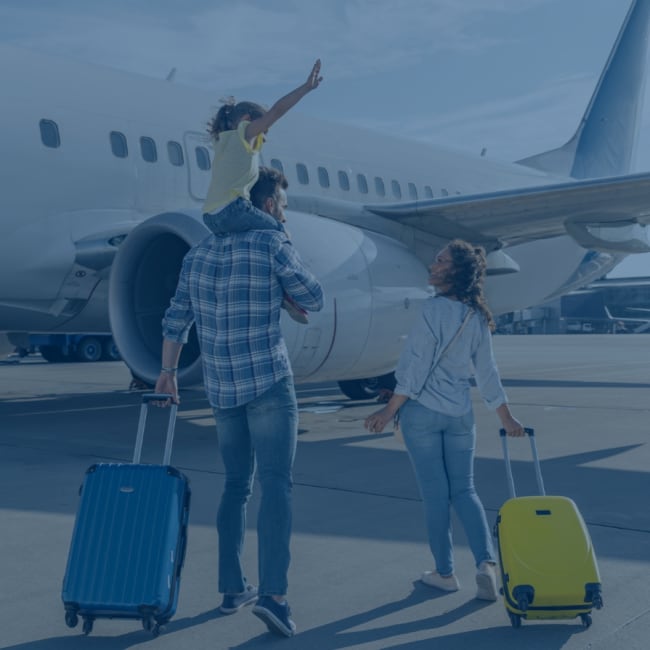How Hotels Can Benefit from Staycations


What is a staycation?
It’s a combination of the words “stay” and “vacation.”
It refers to taking a vacation (“holiday” in UK English) within the immediate or close proximity of one’s own home.
Many people are also taking a new but similar type of vacation, also within driving distance: the nearcation. No matter where you are in the world, it’s likely that your customers are considering a nearcation/staycation. Here’s how you can capitalize on these travel trends.
The Rise of Staycations
Staycations have reached immense popularity around the world in the past several years. This is largely due to their convenience, affordability, simplicity, and low carbon footprint. Additionally, it is the only form of travel that has grown in recent years—despite, or maybe because of, the pandemic.
And rightfully so.
Facing constantly changing travel restrictions, especially with international travel, travelers are looking for a stress-free getaway. They want to take their vacation with little risk of cancellations or last-minute changes. Many times over the past two years, it was in fact the only form of “travel” possible.
Many travelers tried a staycation for the first time, taking advantage of particularly low rates due to low hotel occupancy.
As the pandemic continues with new, potentially more contagious variants of COVID-19, more people will turn to staycations. It’s not only a great way to mentally get away, but also a way to escape the confines of (often-quarantined) homes.
Staycations in the UK: Growth of a “New” Type of Travel
Consider the situation in the UK. Before the pandemic began, UK domestic travel was already popular. By 2019, it had reached nearly GBP 25 billion. While domestic travel in 2020 was generally the primary option for leisure travelers in the UK, spending fell and staycations gained more popularity.
The vacation-related search term that grew the most in the UK after the lockdown was “staycation,” with a YOY growth of over 500% last year.
Hospitality: Most Impacted and Main Beneficiaries
What do staycations mean for travel companies?
Unfortunately, this type of travel excludes air and sea transportation and, at most, includes a short car/bus/train ride. The main beneficiaries of staycations are, without a doubt, hotels.
Independent hotels and small local groups will already be suited for this type of traveler, and most likely offer their websites and marketing materials in the language of the surrounding areas.
Typically, it’s the larger hotel chains that will need to take stock of their websites to see whether the local language is offered. More often than not, the large hotel groups determine the languages for their websites at a macro level, depending on the global numbers of guests, the languages they speak, and the regions where they operate. It also means the local language is often not offered on the corporate hotel website, though an unsanctioned site may exist. But if we look beyond the big data and go to the micro-level of these large groups, it’s almost always the local language that is strongest for each hotel, with the only exception being resorts.
So if you are a larger hotel chain, make sure each hotel is reviewed individually to determine the top languages based on proximity, plus those within a short drive/ride. These may not be the top inbound markets, but they have become the ones who can most easily access your hotel—and, therefore, will. For example, if you are located in a border area where two, three, or four countries touch, pay special attention to traffic flows, train stations, etc., to understand who would make the most logical local guest.
In order to drive your occupancy rates during these times, make sure you shift your marketing efforts in these markets and offer the content in their respective languages.
“Staycations” Are Trending…
Here are a few search numbers by country from Google Trends, highlighting the uptick in searches related to staycations over the past five years:
Spain:

UK:

US:

France:

Germany – volume of searches for specific periods remained similar but the intervals became closer:

Singapore:

Thailand:

Russia:

Globally:

How to Stay Ahead of Staycations
When it comes to targeting the right markets and attracting guests during times of restricted travel, make sure you consider what we’ve covered so far.
You must also stay ahead of the situation for nearby areas/regions/countries that have different requirements. If other areas near you have stricter controls, use and promote that to your advantage.
Additionally, if your property is located in a region with tough restrictions but close to more relaxed zones, you’ll need to work harder to keep your potential local market close. Be creative. A staycation means that even the hotel’s next-door neighbors are potential guests, so you could advertise offers right outside the building.
Of course, any standard draws to your destination still apply as well. For example, if everything is closed across the border on Sundays, but your city stays open, take advantage of that.
Also, adjust your marketing efforts accordingly so you can target travelers in close proximity as well as the drive-to markets. Here are a few examples of how to do that:
- Reallocate some of your paid acquisition budget to target searches performed locally.
- Try to find ways to reach an audience that is arriving via road transportation.
- Create offers that include parking or early check-in and late checkout.
- Add “staycation” to your paid keywords, and include it in your offer content.
If you’re unsure what corresponding terms are searched for in other languages, contact TransPerfect today, and we’ll be happy to support you.



